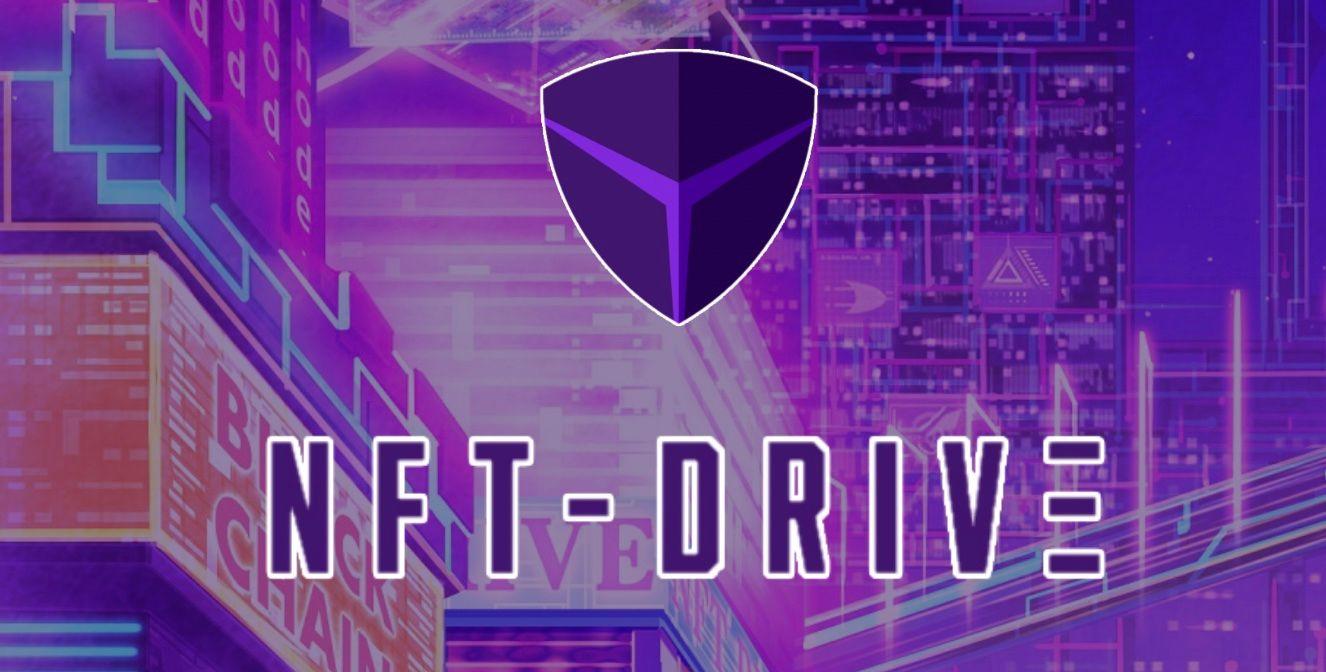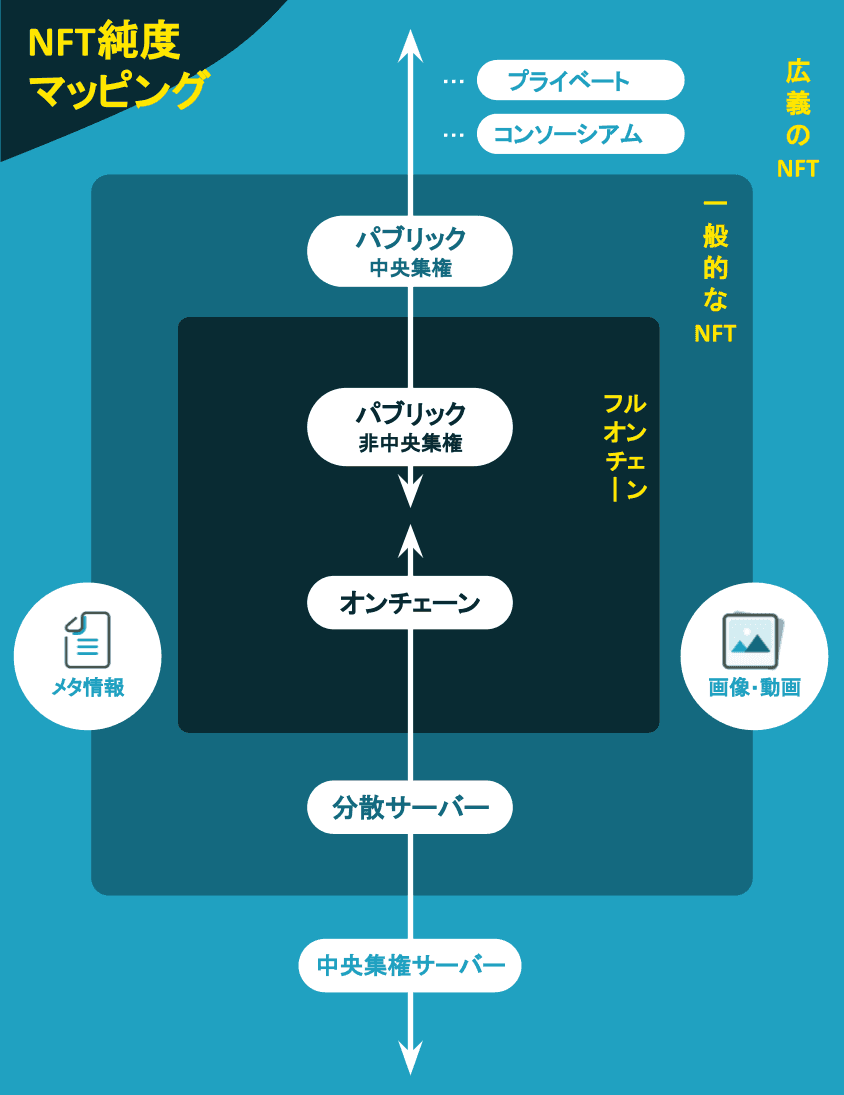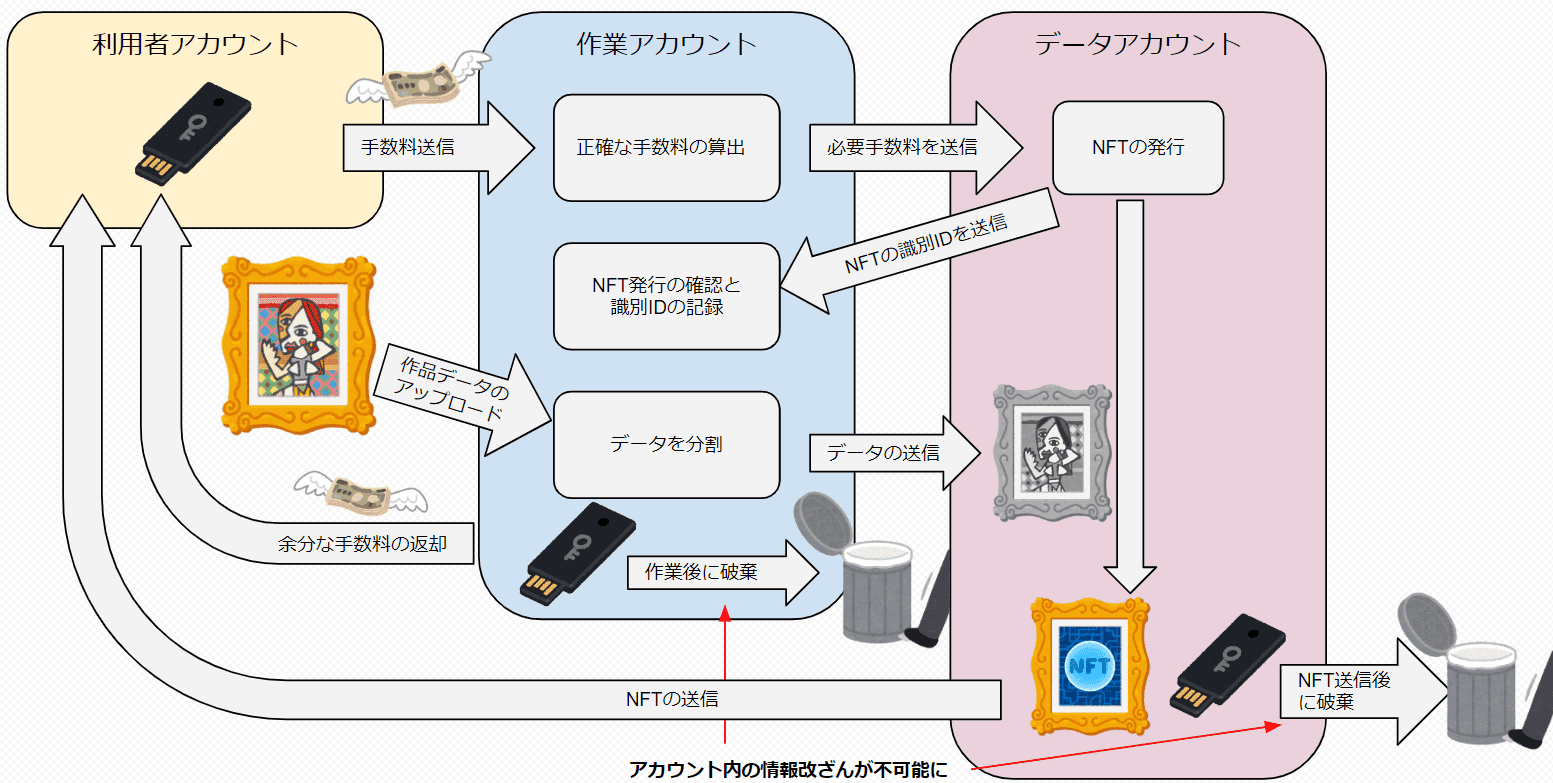Update 6/4/2023
How Fully-on-Chain NFT works

How Fully-on-chain NFT works
The concept of Non-Fungible-Token (NFT) is slowly permeating society. Meanwhile, opportunities to hear the new word “Fully-on-chain NFT” are increasing.
“What is a Fully-on chain?”
"What's so great about Fully-on-chain NFTs?"
“Is Fully-on-chain NFT technically impossible?”
Isn't there a lot of people who have such a question? For those who have such questions, I will answer the above three questions as briefly as possible.
What is Fully-on-Chain?
Differences between on-chain and off-chain
Chain here refers to blockchain. Exchanging information on the blockchain (e.g. sending and receiving currency or data) is called on-chain. On the other hand, when information is exchanged in a place other than the blockchain, it is called off-chain.
- All exchanges of information on the blockchain are recorded and virtually irreversible. On the other hand, in the case of off-chain, it is possible to modify these records later by those with strong authority such as the operation.
- When making changes to information stored on the blockchain, the approval of the owner (user) of the information is required. Outside the blockchain, this is not required. In other words, off-chain is fraught with the danger that information can be tampered with without the consent of the owner.
Fully-on-chain means that all processes and work steps are completed on the blockchain. For the above reasons, services provided fully-on-chain can protect users from those with powerful powers, such as operators and nations.
What is groundbreaking about Fully-on-chain NFT art?

To describe NFT art in a nutshell, it is a token that allows you to store and trade a certificate of ownership of the art on the blockchain. The vast majority of NFT art available for purchase today is not fully-on-chain, even though it is traded on the blockchain. The reason is that the blockchains currently in general use are not designed to directly upload and use large amounts of data.
As a premise, a fee will be charged in proportion to the amount of information rewritten on the blockchain. In other words, if you try to write a large amount of data such as the original data of NFT art on the blockchain, you will have to pay a huge fee, which is not realistic because it is not profitable.
Therefore, the current solution is to record the storage destination (link) of the original data in the NFT and separately store the original data in a place where the data can be stored inexpensively (such as on a cloud server). is commonly used. The problem here is that the data is not stored on the blockchain (off-chain). Although the ownership of these NFT arts is protected on the blockchain, the original data is always at risk.
On the other hand, Fully-on-chain NFT art, which safely stores the original data of NFT art on the blockchain, has no fear of tampering or erasing the original data without the permission of the owner under any circumstances. And it is excellent in that the owner of the NFT art and the manager of the original data are the same.
- However, the point that it cannot be deleted is an advantage, but there are cases where it is a disadvantage. It is recommended to use them properly depending on the usage scene.
Is Fully-on-chain NFT art feasible?
Fully-on-chain NFT is feasible, and there is already an organization called NFT-Drive that provides a fully-on-chain NFT service from Japan. In order to unravel the feasibility of Fully-on-chain NFT, we will explain their NFT fully-on-chain process.
There are two key points in NFT-Drive's Fully on-chain NFT issuance.
Use of Symbol Blockchain for efficient data storage
Issuing NFTs without direct involvement in operations using multiple accounts
We will explain the Fully-on-chain NFT issuing process of NFT-Drive using the following diagram.

- Users who issue NFTs upload the original data of NFT art and pay a fee.
- Recalculate the fees required by the working account. Since the fee will change in proportion to the number of users who connect at the same time, take a little more fee and recalculate it just before the start of work.
- The data account receives necessary and sufficient fees from the working account and issues NFTs.
- The data account will send the NFT ID to the work account as soon as the NFT is issued.
- The working account receives the NFT's ID and makes a record. This is to facilitate confirmation of NFT issuance and subsequent data reference.
- The work data will be divided by the work account and sent to the data account in the form of subdividing the data.
- As soon as the data transmission to the data account is completed, the NFT will be sent to the user account.
- Unused fees are returned from the working account.
- Private keys for work and data accounts are destroyed. This will prevent anyone from rewriting the information in your account from this point onwards. However, since the information can be read, the work data can be viewed.
In other words, NFT-Drive utilizes Symbol to minimize the data upload cost, and by permanently abandoning the administrator authority of the account used for NFT issuance and original data storage after NFT issuance, data can be rewritten. We were able to realize fully-on-chain NFT without worrying about being stolen.
NFT-Drive FAQ
What is the philosophy of NFT-Drive?
It is to create absolute data that cannot be falsified. I want to create a time capsule of digital data and data that will remain in a decentralized form forever.
Is there a technical capacity limit for on-chain NFTs?
There is no specific technical capacity limit. Considering the practical reading and writing time, I think the limit is about 30MB (about 15 iPhone photos). As long as waiting and increasing fees are acceptable.
Other than Full-on-chain NFTs, what are the differences from general NFT marketplaces?
The NFT marketplace, which is currently used by many users, is centralized. Since we directly manage NFT art and the platforms that display them, interventions such as freezing NFT art (making it undisplayable + untradable) may be performed. On the other hand, NFT-Drive is a decentralized NFT marketplace, so the management side can not interfere with NFT art at all. Also, since the NFT art display function exists independently of the operation, it cannot be disabled by the operation.